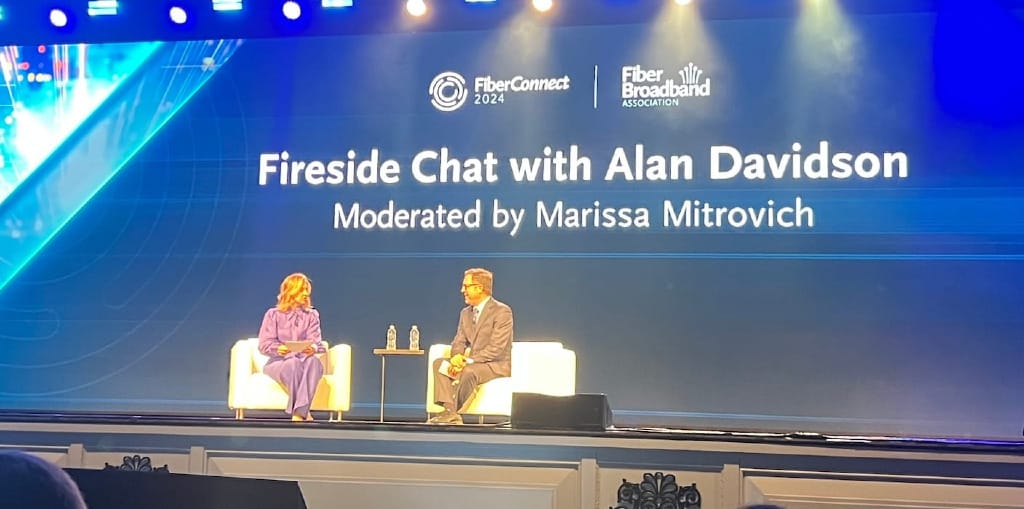NTIA Chief: BEAD Guidance on Non-Fiber Alternative Networks Coming Soon
The guidance will be up for public comment in 'a couple of weeks.'
Jake Neenan

NASHVILLE, July 29, 2024 – The agency in charge of the Biden administration’s flagship broadband expansion program will put out new guidance on using alternative technologies – like unlicensed wireless and low-earth orbit satellites – in “a couple of weeks,” its top official said on Monday.
“We’re putting this out for public comment, and we really invite you all to take a look at it,” National Telecommunications and Information Administration Administrator Alan Davidson told network operators gathered here at the Fiber Connect trade show. “Standby soon – that’s coming out very shortly.”
NTIA, a division of the Commerce Department, has authority to fund broadband projects under the $42.5 billion Broadband Equity, Access, and Deployment program, which favors fiber projects over grant applicants looking to use other technologies.
Davidson reiterated that the program was still “fiber forward,” but noted that the hardest to reach places will need less expensive solutions if states are to connect every home and business without adequate broadband.
Under BEAD rules, states and territories – the entities ultimately awarding grants under the program – can look to fund non-fiber projects in places where no fiber providers bid or where fiber project costs exceed a certain threshold, which will vary from state to state once grant applications are in.
At that point, other technologies deemed “reliable,” like licensed fixed wireless or coaxial cable, become eligible. If there are no bids using those methods, or there are only bids that exceed the high-cost threshold, then “alternative technologies” like low-earth orbit satellite and fixed wireless on unlicensed spectrum become eligible.
“We know there will be places where that’s the thing that makes the most sense,” Davidson said. The agency’s upcoming guidance for states will “outline the process for using those alternative technologies,” he said.
Most state broadband offices are working through their challenge processes now, accepting and processing challenges to government broadband coverage data to refine their lists of unserved and underserved locations.
So far 26 states and territories have a greenlight from the NTIA to start taking grant applications once their maps have been finalized. The agency is aiming to get the rest of those approvals out the door by this fall.









Member discussion